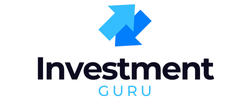Managing student loans in 2025 comes with more choices than ever. Two of the most talked-about options are refinancing with a private lender or enrolling in the federal government’s new SAVE Plan (Saving on a Valuable Education). At first glance, both promise lower payments, but they work in completely different ways—and the choice you make can have long-term consequences.
Refinancing means replacing your existing loans with a new private loan, ideally at a lower interest rate. This can cut down on how much interest you pay over time and may reduce your monthly payment if you extend your term. The catch? Once you refinance federal loans, you lose access to federal benefits like income-driven repayment and loan forgiveness.
The SAVE Plan, by contrast, is a federal income-driven repayment program that ties your monthly payments to your income and family size. For many borrowers, payments are significantly lower than under the old REPAYE plan, and interest that isn’t covered by the payment no longer builds up. The trade-off is that your loan may take longer to pay off, and you’ll pay more overall if your income rises in the future.
Deciding between the two comes down to your situation. If you have strong credit and stable income, refinancing might save you money by locking in a lower interest rate. If your income is lower or unpredictable, the SAVE Plan provides breathing room and protection without the risk of default.
In this article, we’ll compare student loan refinancing and the SAVE Plan side by side, highlighting how they work, the benefits and risks of each, and which borrowers are best suited for one option over the other. By the end, you’ll know which path makes more sense for your financial goals in 2025.
Table of Contents
What Is the SAVE Plan in 2025?
The Saving on a Valuable Education (SAVE) Plan is currently the most borrower-friendly income-driven repayment plan introduced by the U.S. Department of Education. Replacing the old REPAYE plan in 2023, it continues to grow more favorable in 2025 with additional provisions lowering monthly payments for millions of federal borrowers.
Key features of SAVE include:
- Monthly payments capped at 5–10% of discretionary income (down from 10–15% in older plans).
- No interest accrual if your monthly payment doesn’t cover all interest.
- Forgiveness after 10–25 years, depending on your initial balance and payment history.
- Forgiveness after just 10 years for borrowers with balances of $12,000 or less.
According to Federal Student Aid, this plan can reduce average monthly payments for undergraduate borrowers by half compared to previous income-driven repayment programs.
What Does Student Loan Refinancing Mean in 2025?
Refinancing student loans involves taking out a new loan from a private lender with better terms to pay off existing federal or private loans. A refinance can reduce your interest rate, change your repayment term, or consolidate multiple loans into a single monthly bill.
However, refinancing federal loans into a private loan has consequences:
- You lose access to SAVE and all federal forgiveness programs.
- No future pauses or deferments like interest waivers seen during the COVID-19 pandemic.
- Private terms vary by credit score, income, and debt-to-income ratio.
If you qualify for a low fixed rate (as of early 2025, average refinance rates are 4–8% depending on creditworthiness), refinancing can save tens of thousands of dollars in interest. But unlike SAVE, there is no forgiveness—your debt must be paid in full.
Student Loan Refinance vs SAVE Plan 2025: Side-by-Side Comparison
| Feature | SAVE Plan (2025) | Refinancing (Private Loan) |
|---|---|---|
| Eligibility | Federal student loans only | Federal or private loans with good credit |
| Monthly Payment | 5%–10% of discretionary income | Fixed or variable, based on term/credit |
| Interest Benefits | No interest added if payment < interest | Dependent on lender’s rate |
| Loan Forgiveness | Available after 10–25 years | Not available |
| Risk | Payment may change with income | Lose access to federal protections |
| Best for | Low/mid income borrowers, pursuing forgiveness | High income borrowers who can pay faster |
How to Apply for the SAVE Plan in 2025
Enrolling in SAVE is free and managed entirely through the U.S. Department of Education. Here are the steps:
- Log in to your Federal Student Aid account.
- Navigate to “Income-Driven Repayment Plan Request.”
- Choose the SAVE Plan. The application will automatically show the lowest monthly payment available.
- Submit your most recent IRS tax information (the IRS Data Retrieval Tool makes this easy).
- Confirm and submit. Once approved, your servicer will implement your new payment in 1–2 billing cycles.
Costs: There are no setup fees or in-app costs for SAVE. However, you must recertify income every year. Missing recertification could increase your payment.
How to Refinance Student Loans in 2025
Refinancing is available through banks, online lenders, and credit unions. Here’s how to begin:
- Check your credit score (ideally 680+ with low debt-to-income).
- Use lender prequalification tools to compare rates (does not hurt credit in most cases).
- Submit a full application with income, employment, and education verification.
- Choose loan terms, such as 5, 10, or 15 years, and sign final disclosures.
- Once approved, your old federal or private loans are paid off, and you begin repayment with the new lender.
Costs: Most reputable lenders do not charge origination fees. Some may charge late fees. Additional costs could include higher rates if you lack a co-signer or strong credit profile.
Good resources for rate comparisons include Investopedia’s list of best refinance companies updated for 2025.

Who Should Choose SAVE vs Refinancing in 2025?
SAVE Plan is Better If:
- Your income is modest compared to your debt balance.
- You plan to take advantage of forgiveness.
- You want predictable relief like no interest accrual and income-based adjustments.
Refinancing is Better If:
- You have strong credit and can qualify for interest rates below your federal rate.
- You want to aggressively pay off loans in 5–10 years.
- You don’t need forgiveness programs (common among high-earning professionals).
Example Scenarios for 2025
Scenario 1: A $60,000 Income, $40,000 Federal Loans
Under SAVE, the borrower may pay about $180/month with forgiveness after 20 years if any balance remains. Refinancing at 5% for 10 years might mean $425/month, but the debt is cleared in a decade. SAVE gives immediate relief, while refinance saves time overall.
Scenario 2: A $110,000 Income, $60,000 Loans
This borrower may have SAVE payments around $650/month with a long horizon for forgiveness, but interest accrual won’t grow the loan. With excellent credit, refinancing at 4.5% could mean $622/month for 10 years, saving substantially versus SAVE. Refinance likely wins.

Tips to Maximize Your Savings in 2025
- Compare refinance rates from at least 3 lenders before deciding.
- Use the U.S. Department of Education’s Loan Simulator to test SAVE payments first.
- If eligible for forgiveness programs like Public Service Loan Forgiveness (PSLF), do not refinance.
- Automate payments—many lenders and SAVE offer 0.25% discounts for auto-debit.
- Update income annually in SAVE; update promptly if income drops to lower payments.
FAQs: Student Loan Refinance vs SAVE Plan 2025
- Is SAVE mandatory for federal borrowers in 2025? No, it’s an optional plan but automatically recommended as the most affordable option.
- Can I refinance and later go back to SAVE? No, once you refinance to a private loan, federal plans like SAVE are no longer available.
- Does SAVE forgive interest? It cancels unpaid interest each month if your payment doesn’t cover it.
- Is refinancing risky in 2025? Only if your income becomes unstable and you lose protections offered by federal loans.
- What credit score is needed to refinance? Many lenders prefer 680+, but the best rates generally require 740+.
- Can SAVE payments be zero? Yes, if income is very low or under poverty guidelines, payments can be $0 with no interest growth.
- Will refinancing affect Public Service Loan Forgiveness (PSLF)? Yes—refinancing eliminates PSLF eligibility, so avoid it if you’re pursuing PSLF.
- Does SAVE benefit married borrowers? Yes, but it depends on whether you file jointly or separately, as spousal income may or may not be counted.
- Are refinance loans variable or fixed? Both options exist. Fixed is safer in a rising-rate environment.
- What’s the average SAVE payment reduction in 2025? According to Federal Student Aid data, undergraduate borrowers can see a 40–50% reduction over previous IDR programs.
Conclusion: How to Decide Between Refinancing and SAVE in 2025
The right choice between student loan refinance vs SAVE plan 2025 depends primarily on your income stability, long-term career path, and forgiveness potential. SAVE offers safety nets, forgiveness, and income-based relief, making it best for modest earners and those uncertain about repayment capacity. Refinancing is more appealing to borrowers with high incomes and excellent credit who can aggressively eliminate debt without relying on federal protections.
The smartest step you can take today is to test both options: simulate your SAVE payments on studentaid.gov and then request refinance quotes from at least three lenders. Pairing these insights allows you to choose not only the cheapest option but also the one that aligns with your risk tolerance and career outlook.


